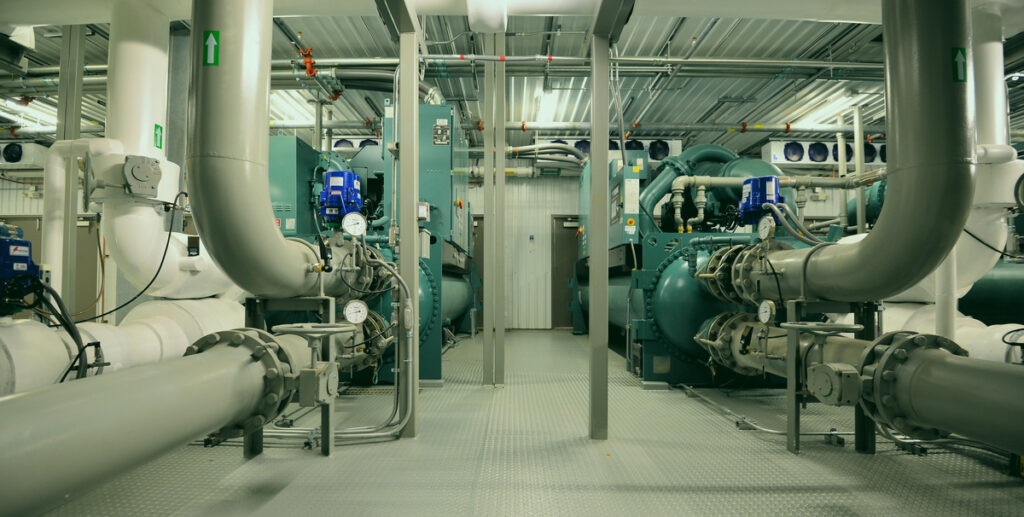Modular plant system arrangement: Megajana promptness for future cooling demand
District cooling systems have been in Malaysia since the early 1990s and it comes as an energy-efficient solution for air conditioning needs. These systems utilize a centralized plant to produce chilled water, which is then distributed via a system of pipes to cool several buildings. One key component of a district cooling system is the modular chiller system arrangement, which plays a pivotal role in scalability, improving efficiency, and overall performance.
District cooling provides a more sustainable alternative to conventional air conditioning systems. By centralizing the cooling process, it improves overall cooling infrastructure reliability, minimizes environmental impact, and provides for better control over energy consumption. Modular chiller systems are at the core of this innovative approach, providing a flexible and scalable solution to satisfy the diverse needs of different building usage.

A modular chiller system consists of multiple smaller chiller units that work together to cater for the required cooling capacity. Greater flexibility and efficiency in handling variable cooling loads are made possible by the independent operation of each chiller module. The modular approach enables easy expansion or contraction of the system depends on the changing demands of the customers.
One of the important advantages of modular chiller systems is their scalability. As the cooling requirements of a district evolve, additional chiller modules can be seamlessly integrated into the system. This guarantees that the infrastructure for district cooling can adjust to variations in demand without requiring the need for major overhauls.
In term of redundancy, modular chiller systems improve the reliability of district cooling by incorporating redundancy into their design. If one chiller module experiences issue or requires maintenance, the remaining modules can continue to run. This reduces downtime and guarantees a steady supply of cool air to the buildings that are connected.
Better control over energy consumption is made possible by the modular design. Certain chiller modules can be temporarily turned off to optimize energy use and save operating expenses during times of low demand. This adaptive approach improves the overall energy efficiency of the district cooling system. During the chiller temporary shutdown, the cooling plant can utilize its thermal energy storage (TES) tank where the chilled water stored in the tank will be discharged fully to the customer.
Modular chiller systems facilitate easier maintenance. It is possible to repair or replace individual modules without affecting the cooling system as a whole. This not only reduces maintenance time which also pitches to the longevity and reliability of the infrastructure.
As urban areas continue to grow and the demand for sustainable cooling solutions rises, district cooling systems with modular chiller arrangements would be a wise and efficient choice. The adaptability, scalability, and energy efficiency provided by these systems make it ideal for the challenges of modern urban development. As technology improves, the integration of modular chiller systems in district cooling is likely to play an important role in creating steady, eco-friendly, and cost-effective cooling solutions for any new cities.
Contact us to know more about this adaptive chiller arrangements in district cooling system!